Latino History
Washington State has a rich Latino history which encompasses hundreds of sites scattered across the state. In partnership with the National Park Service, over the past several years DAHP has received two Underrepresented Community Grants to complete a study of Latino heritage in the Yakima Valley and Greater Seattle Area. The studies, prepared by Artifacts Consulting, are presented in two reports (in Spanish and English), and comprise of several intensive level historic property inventory forms, and numerous oral interviews. The oral interviews are housed in the State Archives, the inventory form can be accessed via our WISAARD tool, and the full reports can be downloaded here.
Yakima Valley
- Yakima Valley Latino Study - Oct 2016 Find more in WISAARD: Yakima Valley Latino or Project #2015-09-00220
The Yakima Valley Latino Historic Context Study provides a detailed overview of Latino immigration, labor, and cultural development in the valley. The study period begins with the enactment of the Nationality Act and Selective Training and Service Act of 1940 and ends with the enactment of the Immigration and Nationality Act of 1968, encompassing migration immediately prior to and during World War II through settlement in labor camps and company towns, to the establishment of permanent neighborhoods and businesses.
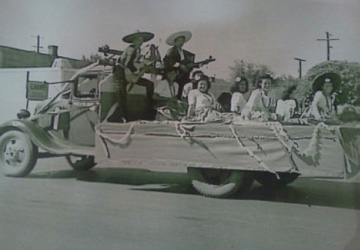 Yakima Valley farms produce a variety of vegetables, fruits, and other commercial crops, including nearly 80 percent of the total US hops production. The valley's transformation into a major agricultural hub in the early twentieth century was aided by irrigation projects and railroad development; however, low population density necessitated reliance on a migrant agricultural workforce.
Yakima Valley farms produce a variety of vegetables, fruits, and other commercial crops, including nearly 80 percent of the total US hops production. The valley's transformation into a major agricultural hub in the early twentieth century was aided by irrigation projects and railroad development; however, low population density necessitated reliance on a migrant agricultural workforce.
Early Latino communities formed in the towns of Wapato, Toppenish, Granger, Sunnyside, Mabton, and Grandview. Over time, settlers transitioned from seasonal to permanent residency, eventually buying homes and establishing roots. The late 1940s through the 1950s saw the growth of Latino-owned businesses rooted in Mexican and the establishment of Latino radio and film programming, providing an outlet for cultural expression.
A total of 37 properties were surveyed for the study, including labor camps, churches, radio stations, and storefronts. Two potential historic districts—Tortilla Flats in Wapato and the Goldings Hop Farm Company Town—were identified. These places reflect the resilience, entrepreneurship, and cultural traditions that continue to thrive in the region today.
To learn more about the people and places that have contributed to Latino cultural heritage in the Yakima Valley, the complete study, in English and Spanish, is linked here.
Estudio y Auditoría de los Latinos del Valle de Yakima (Yakima Valley Latino Study Survey) ofrece una visión detallada de la inmigración, el trabajo y el desarrollo cultural de los latinos en el Valle de Yakima. El periodo de estudio comienza con la promulgación de la Ley de Nacionalidad y la Ley de Entrenamiento y Servicio Selectivo de 1940 y termina con la promulgación de la Ley de Inmigración y Nacionalidad de 1968, abarcando la migración inmediatamente antes y durante la Segunda Guerra Mundial a través del asentamiento en campos de trabajo y colonias industriales, hasta el establecimiento de vecindarios y negocios permanentes.
Las tierras del Valle de Yakima producen una variedad de verduras, frutas y otros cultivos comerciales, incluyendo casi el 80 por ciento de la producción total de lúpulo en los Estados Unidos. La transformación del Valle en un importante centro agrícola a principios del siglo XX fue facilitada por proyectos de irrigación y el desarrollo del ferrocarril; sin embargo, la baja densidad de población hizo necesario depender de una mano de obra agrícola migrante.
Las primeras comunidades latinas se formaron en los pueblos de Wapato, Toppenish, Granger, Sunnyside, Mabton y Grandview. Con el tiempo, estos pobladores pasaron de la residencia estacional a la residencia permanente, comprando eventualmente casas y estableciendo raíces. A finales de la década de 1940 y durante la de 1950, se vio el crecimiento de negocios propiedad de latinos basados en la cultura mexicana y el establecimiento de programación de radio y cine latino, ofreciendo un medio de expresión cultural.
Un total de 37 propiedades fueron estudiadas para la auditoría, incluyendo campamentos de trabajadores, iglesias, estaciones de radio y tiendas. Se identificaron dos distritos históricos potenciales: Tortilla Flats en Wapato y la colonia industrial de la compañía Goldings Hop Farm. Estos lugares reflejan la resiliencia, el espíritu emprendedor y las tradiciones culturales que continúan prosperando en la región hoy en día.
Para aprender más sobre las personas y lugares que han contribuido al patrimonio cultural latino en el Valle de Yakima. El estudio completo, en inglés y español, se encuentra aquí.
Sample of Yakima Valley Surveyed Resources |
||
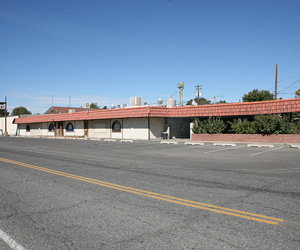 |
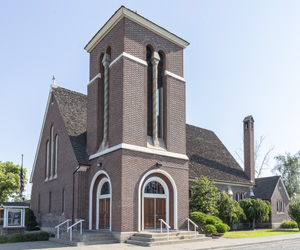 |
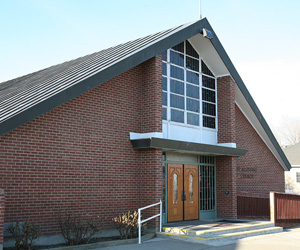 |
| El Ranchito, established in Zillah in 1951, provided a welcome and comfortable oasis for many Latino families and their friends. | The first organized Mexican dances took place in community centers, grange halls, and social halls in various Catholic parishes, like St. Peter Claver in Wapato. | St Aloysius Catholic Church in Toppenish offered the first Spanish speaking Mass in the valley. |
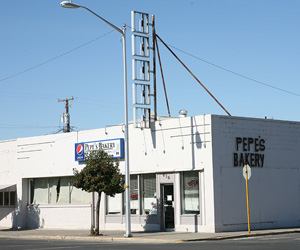 |
 |
|
| In 1950, Herminia Mendez began broadcasting Spanish language programming on radio at KREW in Sunnyside. | Fred Guzman opened his barber shop in Sunnyside in 1961. It continues to be an important fixture within the Latino community. | |
Further Info:
- A History of Latino Leaders in the Yakima Valley - Part 1
- A History of Latino Leaders in the Yakima Valley - Part 2
- Wapato - It's History and Hispanic Heritage
Seattle Area
- Latino Heritage of Greater Seattle Study - May 2019 Find more in WISAARD: Latino Heritage Survey Phase II - Project# 2018-10-07903
Preparation of these reports would not have been possible without the support from the following entities and individuals: University of Washington, Erasmo Gamboa, Gonzalo Guzman; Heritage Univeristy, Ricardo Valdez, Greg Hinze; Radio KDNA; and Mac Gamboa. Heritage University students and the following interviewees: Nohemi Sanchez interviewed by Yesenia Hunter & Cesar Lopez, Pete Flores interviewed by Emiliano Orozco & Sean Etherington, Jessie Farias interviewed by Joni Snyder and Murry Hannigan, and Gilberto Alaniz interviewed by LaTasha Larez.




